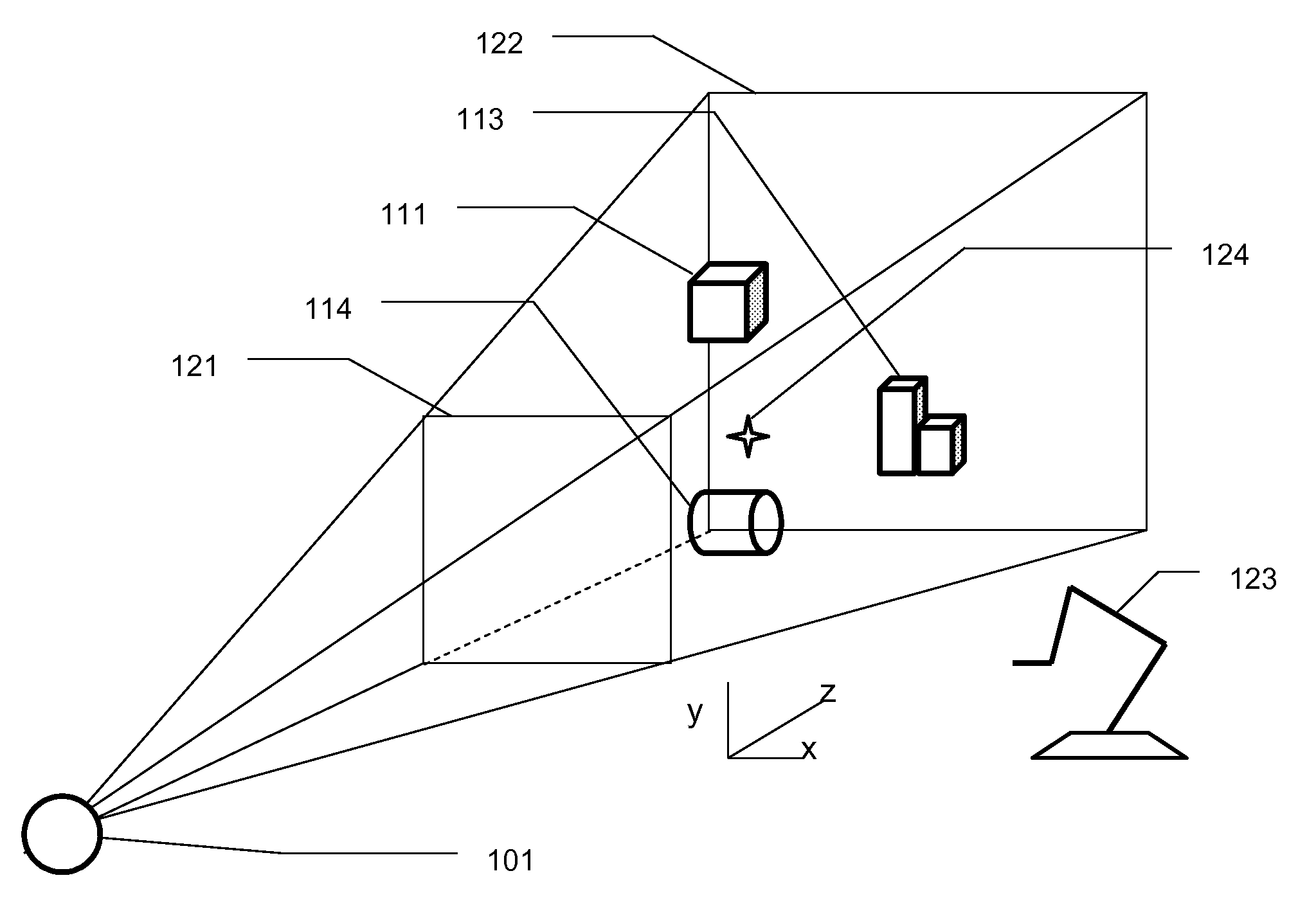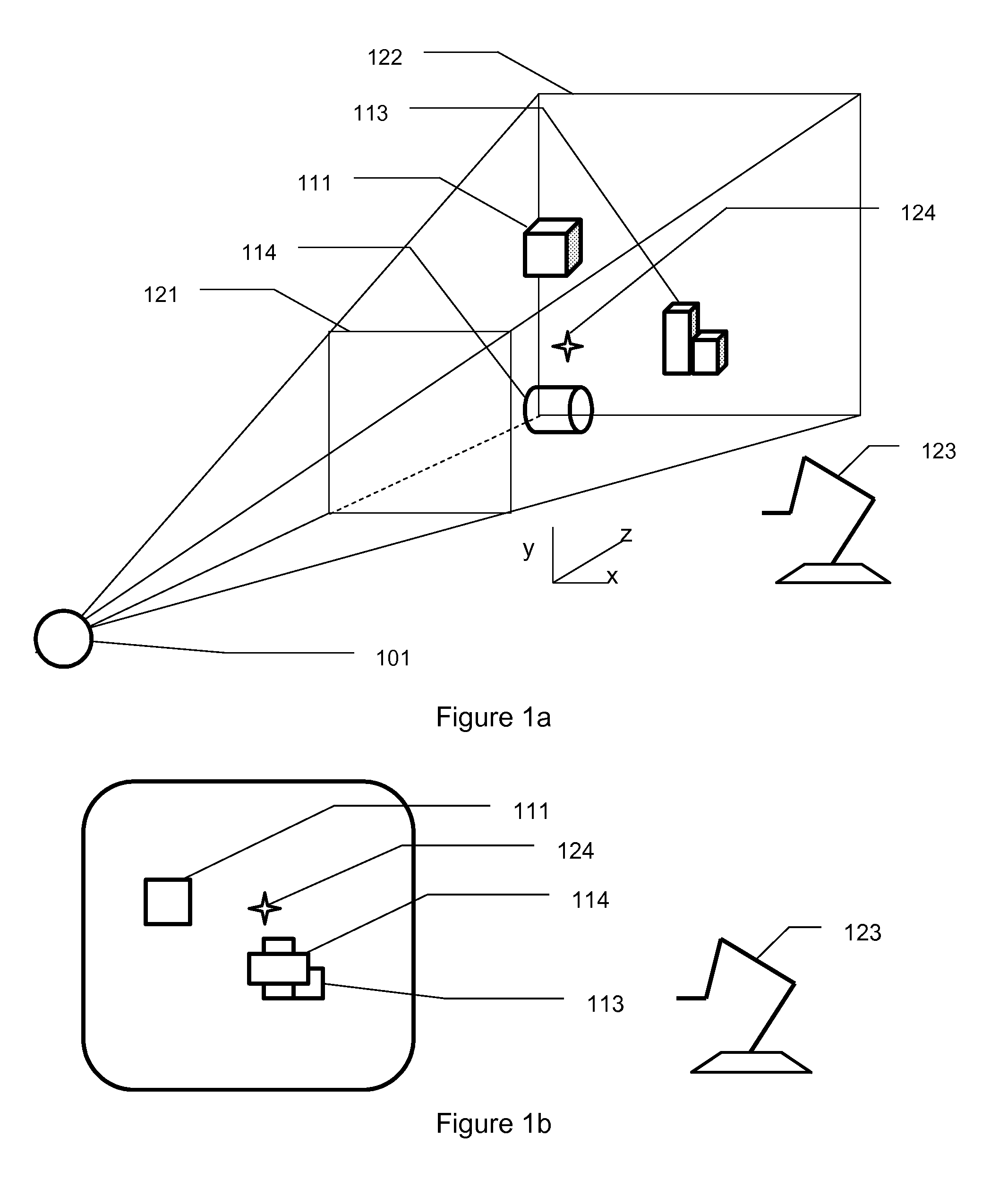Human-Computer Interface Including Efficient Three-Dimensional Controls
a human-computer interface and efficient technology, applied in the field of multi-dimensional displays and navigation, can solve the problems of reducing the precision of depth perception required to find the control, and achieve the effect of reducing the precision of depth perception, increasing depth, and facilitating access for users
- Summary
- Abstract
- Description
- Claims
- Application Information
AI Technical Summary
Benefits of technology
Problems solved by technology
Method used
Image
Examples
example controls
[0032]FIG. 5(a,b) is a representation of a set of three-dimensional controls associated with a three-dimensional space. FIG. 5b shows the graphical display of the example, with a control region 501 near the left edge of the display. Within the control region are several controls, for example three-dimensional buttons 502 and sliders 503. FIG. 5a shows a representation of the three-dimensional space, including the haptic presentation of the controls shown at two example depths D1, D2 and the graphical representation of the controls at the front plane in the figure. The control region 501 is mapped to a range of z coordinates, so that the user can always see the controls available at the left edge of the display, independent of the user navigation in the three-dimensional space. The user can enter the control region 501 at any depth, for example at depths D1, D2 in FIG. 5a. The haptic depth can be treated as relative to the entering depth, for example D1, D2, so that the controls alwa...
PUM
 Login to View More
Login to View More Abstract
Description
Claims
Application Information
 Login to View More
Login to View More - R&D
- Intellectual Property
- Life Sciences
- Materials
- Tech Scout
- Unparalleled Data Quality
- Higher Quality Content
- 60% Fewer Hallucinations
Browse by: Latest US Patents, China's latest patents, Technical Efficacy Thesaurus, Application Domain, Technology Topic, Popular Technical Reports.
© 2025 PatSnap. All rights reserved.Legal|Privacy policy|Modern Slavery Act Transparency Statement|Sitemap|About US| Contact US: help@patsnap.com



